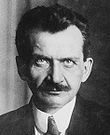German election, 1933
|
|
|||||||||||||||||||||||||||||||||||||||||||||||||||||||||||||||||||||||||||||||||||||||||||||||||||||||||||
|
|||||||||||||||||||||||||||||||||||||||||||||||||||||||||||||||||||||||||||||||||||||||||||||||||||||||||||
|
|||||||||||||||||||||||||||||||||||||||||||||||||||||||||||||||||||||||||||||||||||||||||||||||||||||||||||
|
|||||||||||||||||||||||||||||||||||||||||||||||||||||||||||||||||||||||||||||||||||||||||||||||||||||||||||
Adolf Hitler a coalition Chancellor
Nazi Party(DNVP coalition)
Federal elections were held in Germany on 5 March 1933. The 1933 poll was held after the Nazi seizure of power and the Reichstag fire, just six days before the election. Nazi storm troopers had unleashed a campaign of violence against the Communist Party (KPD), left-wingers, trade unionists, the Social Democratic Party of Germany, and the centre-right Catholic Centre Party.
The 1933 election followed the previous year's two elections (July and November) and Hitler's appointment as Chancellor. In the months before the 1933 election, brownshirts and SS displayed "terror, repression and propaganda [...] across the land", and Nazi organizations "monitored" the vote process. In Prussia 50,000 members of the SS, SA and Stahlhelm were ordered to monitor the votes by acting Interior Minister Hermann Göring, as auxiliary police.
The Nazis registered a large increase in votes in 1933. Despite waging a campaign of terror against their opponents, the Nazis only tallied 43.9 percent of the vote, well short of a majority. They needed the votes of their coalition partner, the German National People's Party (DNVP), for a bare working majority in the Reichstag.
...
Wikipedia






